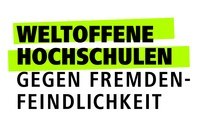Zum Profil
Enterprise Architecture
This course consists of a lecture (2 SWS) and an exercise (2 SWS). It is held in English.
Organisational Issues
Kick-off meeting for the lecture: 14th April 2025, 10 - 12 c.t.
Kick-off meetings for the exercises: 28th April 2025, 12 - 14 c.t. and 29th April 2025, 08 - 10 c.t.
Target audience: Master of Digital Business Management, Information Systems, E-Government, Web and Data Science in the first year
Description of the module, including workload: see MoMa: 04WI2013
Language of the lecture and exercise: English
Examinations: Written assignment to be elaborated and handed by the end of July (detailed schedule will be communicated at the beginning of the classes).
To qualify for taking the examination, successful completion of exercises is a precondition. This includes submission and presentation of exercises (in groups) and peer review of other groups' work (individual).Registration to the lecture via Klips
All materials and slides for the lecture and exercises will be provided via the OpenOLAT e-learning platform
Objectives of the Module
Understanding and mastering the concept of Enterprise Architecture as a means to develop an enterprise concept at different levels of consideration
Knowing the principles of enterprise architectures
Knowing different frameworks for EA
Knowing the functions and governance of EA
By walking through the different phases of the TOGAF framework
Analysing the contents of a given business scenario for an EA thereby applying different analysis and information gathering methods
Modelling the different aspects of an EA through modelling methods
Evaluating the activities, methods and tools available along the different phases of an EA
Benefits of attending the Course
Better understand the added value of structured development, support, and maintenance of IT landscape in an organization and in the network with other organizations; And acquire the respective skills to apply this concept
Improve understanding and learn how to manage interoperability
Understand and learn how to facilitate system and network management
Learn how to pave the way and ensure easier upgrade and exchange of system components
Acquire the fundamental skills and means to govern the strategic, process and technology aspects along a coherent IT strategy for an organisation to support business alignment
Overview of Contents
Introduction: Enterprise Architecture (EA) as an approach to model, design and analyse Information Systems & socio-technical systems in public and private sector
Key concepts of EA
Different EA frameworks in comparison
Architecture views and viewpoint design
Walking through the TOGAF (The Open Group) EA framework and applying the Architecture Development Method (ADM) of TOGAF along a given scenario of online public procurement across borders
Analysing the contents of the scenario's business case
Applying different analysis and information gathering methods
Modelling the different aspects of EA (artefacts) by using modelling methods and tools (Adonis and others)
Defining and managing the requirements along the different phases of the ADM
Comparing different EA tools





